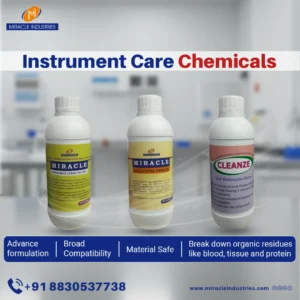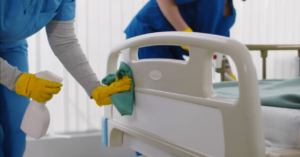Surgical site infections (SSIs) are a significant challenge in modern healthcare, representing one of the most common healthcare-associated infections (HCAIs) globally. Despite advancements in surgical techniques and infection control measures, SSIs remain a concern, leading to prolonged hospital stays, increased medical costs, and higher morbidity and mortality rates. This article explores the causes, risk factors, diagnosis, symptoms, and prevention of SSIs, with a special mention of Miracle Industries’ role in combating these infections.
Causes of Surgical Site Infections
SSIs can arise from various sources, broadly categorised as endogenous, exogenous, and other causes:
Endogenous Infection:
These infections originate from the patient’s own body, particularly from bacteria residing on the skin or in internal tissues.
Exogenous Infection:
These infections are caused by external sources such as contaminated surgical instruments, unsterile operating environments, or the hands of healthcare workers. Poor sterilisation practices and breaches in aseptic techniques are significant contributors.

Other Causes of SSI:
Inadequate antibiotic prophylaxis before surgery can leave patients vulnerable to infections.
Environmental factors such as overcrowded or poorly maintained operating rooms can also increase the risk of SSIs.
Risk Factors
Certain conditions and practices make patients more susceptible to SSIs. These include:
Patient-Related Factors:
- Diabetes and other chronic illnesses.
- Obesity, which can hinder wound healing.
- Advanced age, as older patients often have weaker immune systems.
- Smoking reduces blood flow and impairs healing.
Procedure-Related Factors:
- Lengthy surgical procedures increase the exposure time to potential contaminants.
- Emergency surgeries, where infection control measures may be less stringent.
- Use of foreign implants, such as meshes and prosthetics, which can act as surfaces for bacterial colonization.
Environmental Factors:
- Overcrowded hospitals with poor infection control protocols.
- Inadequate staffing or training of healthcare workers.
Diagnosis and Symptoms
Diagnosing an SSI involves clinical evaluation and laboratory investigations. Symptoms may include:
- Redness and Swelling: Around the surgical site.
- Pain and Tenderness: Persistent or worsening pain at the wound site.
- Discharge: Presence of pus or other fluid from the incision.
- Fever: A systemic response to infection.
- Delayed Healing: Wounds that fail to close or exhibit breakdown of sutures.
Diagnostic tests, such as wound cultures and blood tests, are used to identify the specific pathogens responsible and guide treatment.
Preventive Measures
Preventing SSIs requires a multifaceted approach:
Preoperative Measures:
- Administer prophylactic antibiotics within one hour before surgery.
- Ensure proper hand hygiene for surgical teams.
- Prepare the surgical site using antiseptic solutions.
Intraoperative Measures:
- Maintain a sterile operating environment.
- Minimise surgical time and trauma to tissues.
- Use sterile surgical instruments and dressings.
Postoperative Measures:
- Monitor the surgical site for early signs of infection.
- Educate patients on wound care and hygiene.
- Encourage early mobilisation and proper nutrition to promote healing.
Hospital-Wide Strategies:
- Implement stringent infection control protocols.
- Regularly train staff in aseptic techniques.
- Use advanced sterilisation technologies for instruments and surfaces.
Miracle Industries: Pioneering Infection Control Solutions
Miracle Industries has been at the forefront of combating healthcare-associated infections, including surgical site infections. Since 2011, the company has provided innovative products like UVC disinfection systems, chemical and biological indicators, and multienzyme cleaners. Their solutions ensure hospitals can maintain the highest standards of sterilisation and infection control, reducing the risk of SSIs and other HCAIs. By integrating advanced technology with a commitment to quality, Miracle Industries continues to play a pivotal role in enhancing patient safety.
Frequently Asked Questions
1. What are surgical site infections (SSIs)?
SSIs are infections that occur at or near the surgical incision. They can range from superficial infections involving the skin to deeper infections affecting muscles and organs.
2. How can hospitals prevent SSIs effectively?
Hospitals can prevent SSIs by adhering to stringent infection control protocols, such as proper sterilisation of instruments, maintaining a sterile surgical environment, and administering prophylactic antibiotics.
3. Why is early diagnosis of SSIs important?
Early diagnosis allows for prompt treatment, reducing the risk of complications such as prolonged hospital stays, systemic infections, or even death. It also helps in containing healthcare costs.
Conclusion
Surgical site infections pose a significant threat to patient outcomes and healthcare systems. Understanding their causes, risk factors, and preventive measures is essential for healthcare providers and patients. With the contributions of companies like Miracle Industries, the fight against SSIs and other healthcare-associated infections continues to progress, fostering safer surgical practices and better patient care.




